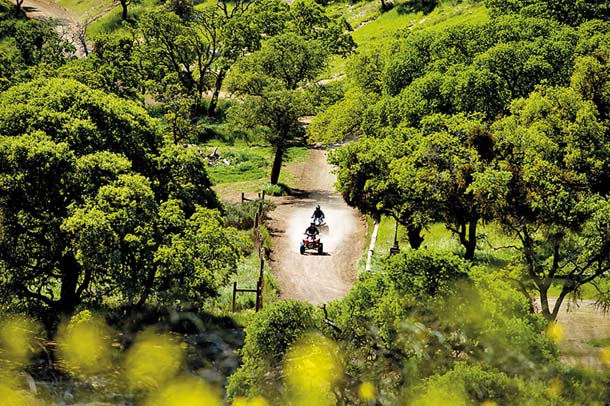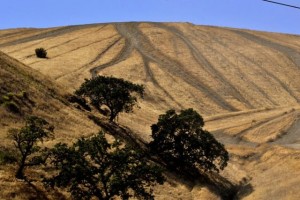While many of California’s state parks are on the chopping block, there is one state park that has the res-ources to amend its general plan and expand its acreage. Carnegie State Vehicular Recreation Area (SVRA) in eastern Alameda County is one of eight SVRAs that form the off-highway motor vehicle (OHV) recreation division of California State Parks and are funded by a gas tax and a portion of OHV registration fees.
East of Livermore, Carnegie stretches across 1,300 acres of dry, windy hills. In 1998 the state bought an adjacent 3,000 acres, dubbed the Alameda-Tesla Expansion, to increase Carnegie’s trails and facilities. Park officials have twice tried and failed to complete environmental impact reports for the project. This time, the expansion and the associated environmental review have been folded into a larger General Plan revision, which includes a series of community meetings. “We’re excited to meet with groups and accommodate the widest range of recreational activities,” says park sector superintendent Joe Ramos. The only thing Carnegie can’t accommodate, he says, is a request for no motorized vehicles.
But that’s exactly what the all-volunteer Friends of Tesla Park wants. This group of citizens calls the expansion property Tesla Park and wants the state to change the intended use of the land to a nonmotorized historic and natural resource park and preserve. Bay Nature first reported in 2001 on the reasons some consider this a poor spot for off-road vehicles: Park critics look at Carnegie as a landscape battered by hard use, and they want to keep the same fate from befalling the vibrant property next door. “Beauty and the beast,” says Friends member Celeste Garamendi, when asked to compare the two properties. The “Tesla Park” parcel is home to endangered and rare species, a historic town and mine site, wildlife corridors, and Native American artifacts. As we reported in 2001, it is the northernmost range for several reptiles, amphibians, birds, and flowers. It is also home to endangered or threatened species such as the Alameda whipsnake, red-legged frog, California tiger salamander, and San Joaquin kit fox.
“The resource features are so diverse, so concentrated, that you can’t fragment them with an OHV trail system and not damage them,” says Garamendi, sister of U.S. Representative John Garamendi (D-CA). “Fragmentation would create unacceptable damage to this incredible parkland.”
Ramos argues that ohv users are just as passionate about their form of outdoor recreation as are hikers and horseback riders, and that their activities need to be permitted but responsibly managed. “Times have changed and users are aware that they have to be environmental stewards,” he says, adding that these days OHV park managers place a greater emphasis on protecting watersheds, reducing pollution, and minimizing erosion.
Follow the process and learn about upcoming meetings and comment periods at carnegiegeneralplan.com. Visit the Friends of Tesla Park at teslapark.org.




-300x69.jpg)